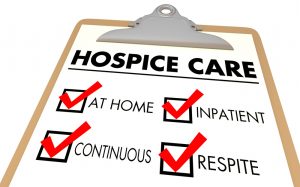The intricate landscape of hospice care serves as both a compassionate response to terminal illness and a complex web of financial considerations, particularly in the realm of insurance reimbursement. As patients and families grapple with the emotional and logistical burdens of end-of-life care, the role of insurance becomes increasingly critical in ensuring that necessary services are adequately funded and accessible. While hospice services aim to provide comfort and support in a time of great need, the financial mechanisms that govern these services can create significant barriers that can hinder access to quality care. Patients often encounter challenges when it comes to securing coverage for vital hospice elements, including medications that alleviate pain, medical equipment that provides comfort, and skilled nursing care that offers both expertise and compassion during this challenging time. This intricate interplay between clinical needs and insurance policies leaves many families navigating a difficult terrain fraught with confusion and uncertainty about their options and rights. Given the importance of timely and effective care, understanding the nuances of insurance reimbursement in hospice care is not just an academic exercise, but an essential aspect of maximizing the quality of life and care that patients experience during their most vulnerable moments. The insights gained from understanding these financial mechanisms can empower families to advocate for themselves and their loved ones, ensuring that they receive the dignity and support they deserve as they approach the end of their journeys.
Please also review AIHCP’s Case Management Training for healthcare professionals.
A. Definition of hospice care
Understanding the definition of hospice care is crucial for effectively navigating the complexities associated with insurance reimbursement processes. Hospice care is a specialized form of medical care designed specifically to provide relief and comfort for individuals who are facing terminal illnesses, and it emphasizes the enhancement of quality of life over curative treatment efforts. This compassionate approach not only addresses the physical symptoms associated with end-of-life care but also includes vital emotional and spiritual support for both patients and their families, aiming to alleviate the multifaceted burdens that accompany serious health conditions. The effectiveness of hospice care can be significantly enhanced through thoughtful strategies that improve care coordination and transition management within healthcare systems, enabling seamless shifts between different levels of care. Various studies highlight numerous challenges faced in this domain, including significant barriers to the recognition, understanding, and adoption of such practices, which are absolutely essential for optimizing patient outcomes and ensuring alignment with reimbursement policies (Brown et al., 2019). Moreover, recent advancements in telemedicine present an exciting opportunity to expand access to hospice care services, ensuring that those in need can receive support in a timely and efficient manner. This evolution illustrates the changing landscape of healthcare delivery and highlights the potential for increased flexibility, responsiveness, and accessibility to hospice services in a world where medical needs are increasingly complex and diverse (Oliai et al., 2005).
B. Importance of insurance reimbursement in hospice services
Insurance reimbursement in hospice services is very important because it affects how well patients nearing the end of life can access care. Good reimbursement policies help hospice programs keep running and provide complete support for both patients and their families. When reimbursement is not enough or comes slowly, it can cause care gaps, limiting services for patients who need them badly. According to (Morton S et al., 2015), strong financial support systems can help create policies that focus on palliative care and better resource coordination for elderly patients. Also, issues of social justice in hospice care highlight the need to expand insurance reimbursements to cover more people, improving fair access to care ((Jennings B et al., 2003)). In the end, strong insurance reimbursement is key to effectively managing the complicated hospice care landscape, enabling providers to offer vital services well.
C. Overview of challenges faced in the reimbursement process
The reimbursement process for hospice care has many problems that can greatly affect how easy it is to access services and the quality of care for patients nearing the end of life. A major issue is the common lack of understanding among health care providers about the rules and guidelines connected to the Medicare hospice benefit. Research done in Maine shows that low referral rates to hospice programs are due to poor education on these benefits, which leads to missed chances for patients who could use hospice care (Tupper et al., 2007). Furthermore, the poor coordination among various service providers makes these problems worse, creating a broken system that hampers communication during crucial times. This brokenness reflects findings from the Eurobarometer Survey on palliative care in Western Europe, which points to limited funding and uneven service options as key barriers to developing care (A Giordano et al., 2010). It is important to tackle these problems to enhance hospice care reimbursement and make sure patients get the help they require.
II. Understanding Hospice Care

Hospice care is a type of health care meant to give comfort and support to those with terminal illnesses. It focuses on quality of life instead of trying to cure the illness. As healthcare systems start to add hospice services to regular care, it is important to know how these services are funded. Research shows that funding methods often depend on the specific country, which can create inequalities in service delivery and cause a gap between payment systems and what patients actually need (Allan et al., 2017). This misalignment can create problems for patients and families who are looking for hospice care, especially when it comes to getting insurance reimbursements. Moreover, using telemedicine in hospice services could improve access to care, but it needs careful planning to ensure fair reimbursement practices in different settings (Oliai et al., 2005). In the end, grasping these issues is key for dealing with the complexities of hospice care and effectively tackling reimbursement problems.
A. Types of services provided in hospice care
In the context of hospice care, a diverse range of services is offered to ensure comprehensive support for patients and their families during the sensitive and challenging end-of-life transitions. Core services include medical care, which is essential for managing illnesses, as well as symptom management to alleviate discomfort, emotional support to help cope with the psychological toll of terminal illness, and spiritual counseling that addresses the often profound questions and concerns that arise during this period. These services are all tailored to meet individual patient needs, recognizing that each person’s journey is unique and requires an individualized approach. Additionally, interdisciplinary teams, which typically consist of physicians, nurses, social workers, and chaplains, collaborate closely to provide a holistic approach to care. This ensures that both the physical and psychosocial aspects of the patients’ experience are comprehensively addressed, fostering not only better health outcomes but also enhancing the quality of life for patients and their loved ones during this time. However, the effectiveness and availability of these services can be heavily influenced by funding models within healthcare systems, which often do not adequately cater to the specific necessities inherent in hospice care (Allan et al., 2017). Moreover, the adoption of telemedicine in hospice settings has emerged as a vital service enhancement, facilitating greater access to healthcare while minimizing the burden of distance for patients and their families, particularly in rural or underserved areas (Oliai et al., 2005). Understanding these diverse services is crucial for navigating the complexities of insurance reimbursement, ensuring that patients and their families can benefit fully from the resources available to them.
B. Eligibility criteria for hospice care
Understanding hospice care is important, especially knowing who can use these necessary services. First, patients need to have a terminal illness with a life expectancy of six months or less, based on how their condition is expected to progress. This rule helps make sure that help is given to those who need it most as they approach the end of their lives. Also, using evidence-based policies can improve how people access hospice care; one key area is palliative care in health systems, which can help with self-management and coordinating care better (Morton S et al., 2015). Moreover, research on Medicaid programs has highlighted member satisfaction and the structure of the benefits, showing that more people are using hospice services (Anderson et al., 2012). So, knowing these eligibility rules is vital for dealing with the challenges of insurance reimbursement for hospice care.
C. Role of healthcare providers in hospice settings
In hospice places, health workers have a key part in making sure that patients get well-rounded and caring support during their last days. This means dealing with not just physical issues but also giving emotional and spiritual care that fits what each patient and their family needs. But, how pay works can greatly affect whether providers can give full care. For example, how they get funded often shows unfair patterns that do not match what patients really need, making it hard to keep hospice services financially stable (Allan et al., 2017). Additionally, new things like telemedicine make the payment process more complicated, which may improve access to care but also raise concerns about fair pay for the services provided (Oliai et al., 2005). Knowing how healthcare delivery and payment systems work together is important for making the role of providers in hospice care better.
III. Insurance Models and Coverage
The intricacies of insurance models and their corresponding coverage options play a critical role in navigating the hospice care landscape, influencing both the availability and quality of services that patients can access. These complex models encompass a variety of reimbursement structures that are not only diverse but also multifaceted, leading healthcare providers to face numerous challenges in aligning their services with the stringent requirements imposed by different insurance plans. Notably, California’s health reform debate has highlighted the complexities inherent in these models, as detailed in (Deborah G Riordan et al., 2007), which discusses the various legislative actions that are influencing the healthcare proposals currently being considered. These structures have profound implications for access to necessary palliative care services, highlighting the critical necessity for evidence-based policy approaches that can address these intricate issues and lead to more equitable care outcomes. Research indicates that while there are substantial data supporting the efficacy of care coordination and prevention strategies, as evidenced in (Morton S et al., 2015), the actual implementation of such policies remains inconsistent across different regions and insurance plans. This inconsistency can lead to significant barriers for patients and families seeking comprehensive and quality hospice care, stressing the urgent need for comprehensive reform that ensures seamless access to vital services, particularly in light of the rapidly shifting insurance landscape. As disparities in coverage persist, it becomes even more essential to consider how regulatory changes and policy innovations can improve the overall delivery of hospice care services across various insurance models.
A. Overview of Medicare and Medicaid hospice benefits
Medicare and Medicaid provide critical hospice benefits aimed at enhancing the quality of care for terminally ill patients while minimizing the burden of financial distress. Specifically, Medicare covers a comprehensive range of services, including nursing care, therapy, and home health aide services, which are designed to maintain comfort and dignity during the final stages of life. These services not only alleviate physical pain but also address emotional, spiritual, and psychological needs, ensuring a holistic approach to end-of-life care. In contrast, Medicaid benefits may vary significantly by state, which introduces a layer of complexity for families navigating these options, as they must be aware of and understand the specific benefits that are available in their state and how to access them. Notably, the current landscape reflects a pressing need for increased policy attention to both preventive measures and the integration of palliative care, areas where research indicates significant gaps exist (Morton S et al., 2015). This focus is essential as it can lead to improved support structures for families and caregivers, who often shoulder the burdens of caregiving during this challenging time. Additionally, advancements in telemedicine can potentially expand access to hospice services, overcoming geographical limitations and enhancing the overall delivery of care for patients and their families (Oliai et al., 2005). This shift towards integrating technology in healthcare not only facilitates remote consultations but also enables caregivers to receive guidance and support from healthcare professionals. Addressing these challenges is vital for improving hospice care reimbursement processes and patient outcomes, ultimately leading to a more compassionate and effective end-of-life care experience for all involved.
B. Private insurance policies and their variations
The area of private insurance policies creates a big problem when looking for hospice care, since these policies often show clear differences that affect payments. Different from public insurance, which usually gives consistent care options, private insurance plans can vary a lot in what they cover, who can use them, and what benefits they provide. This lack of consistency can make things unclear for both patients and healthcare providers, making it harder to get important hospice services. Also, as the changing healthcare scene pushes for combining palliative and hospice care, knowing how funding works is very important. Studies show that funding structures in different countries represent local healthcare situations and often involve a mix of public, private, and charity payers, stressing the need to understand these features to guarantee fair care (Allan et al., 2017). Additionally, recent law changes in places like California highlight the ongoing discussions about healthcare policies that might alter these insurance systems (Deborah G Riordan et al., 2007).
C. Limitations and exclusions in hospice insurance coverage
Navigating the complicated issues of hospice insurance shows clear limits and exclusions that can block access to vital end-of-life care. Many plans have strict eligibility rules, often requiring a prognosis of six months or fewer to live, which can delay important care and increase suffering for patients and their families. Furthermore, some services, like complementary therapies or full-time nursing care, might not be included, leading families to face big out-of-pocket costs. The exclusion of certain medications and treatments makes things more difficult, limiting treatment choices that could enhance quality of life. Health reforms at the legislative level have tried to tackle these problems, but many states continue to deal with policy gaps that weaken fair access to hospice care (Deborah G Riordan et al., 2007). In the end, these issues create difficulties in navigating hospice options, stressing the need for better insurance reform to guarantee dignified care for everyone (Chugh et al., 2009).
IV. Challenges in Insurance Reimbursement

Dealing with the complicated issues of insurance reimbursement in hospice care shows many problems that can make it hard for everyone to get the services they need. One big problem is how different funding systems work, which often depend on specific country situations and make unequal service access. For instance, reimbursement models might not match what populations really need, causing resources to be used incorrectly and worsening current inequalities in care delivery (Allan et al., 2017). Also, the mix of charitable, public, and private payers makes reimbursement complicated, leading to confusion for both providers and patients. As healthcare technology changes, like with new telemedicine advances that improve access to hospice services, it is important for reimbursement systems to change too. These systems need to consider different service levels and meet the special needs of palliative care to make sure reimbursement processes are fair and effective (Oliai et al., 2005).
A. Complexities of billing and coding for hospice services
The complexities of billing and coding for hospice services present significant challenges that can hinder access to quality end-of-life care for patients and their families. As hospice providers navigate a convoluted landscape of Medicare regulations and coding requirements, the potential for discrepancies in documentation can lead to denials of reimbursement, a situation that adversely affects the financial sustainability of the services offered. This is particularly concerning as funding for hospice care is crucial for maintaining the quality of services that patients receive during such a critical time in their lives. Accurate coding is essential since it determines the level of reimbursement that hospice agencies receive from Medicare and other payers, ultimately influencing the resources available for patient care, staff training, and essential support services. Additionally, the need for comprehensive advance care planning is increasingly evident, as it is intricately linked to coding and reimbursement practices vital for effective patient outcomes. For example, recent initiatives by the Centers for Medicare and Medicaid Services have aimed to enhance provider reimbursement for advance care discussions through specific coding practices, reflecting an acknowledgment of their importance in hospice care. However, despite these efforts, the operational realities of implementing such coding frameworks remain intricate and challenging, often necessitating collaboration among hospitals, hospices, and interdisciplinary teams to provide effective palliative care. This collaborative requirement can add layers of complexity as different institutions work to align their coding practices while ensuring that patients receive the compassionate and comprehensive care they need and deserve during their final days. Therefore, addressing these billing and coding complexities is essential for supporting the hospice providers who are dedicated to delivering quality end-of-life care.
B. Delays and denials in reimbursement claims
Delays and denials in claims for reimbursement create big problems for hospice care providers, making it harder to give necessary services to terminally ill patients. The complicated insurance rules can lead to many claim denials that may not be fair, putting financial pressure on providers who rely on prompt payments. Recent studies show that the different ways Medicaid calculates reimbursements, especially between managed care and fee-for-service, make these difficulties worse, causing a lack of clear and stable claims processing (N/A, 2020). Also, the slow Medicare appeals system makes things more difficult, adding to a backlog that can take years to clear. While providers wait a long time for appeal results, they often have payments taken back without justification, which increases their risks and impacts the quality of care for patients (Donley et al., 2018). These issues highlight the pressing need for changes in the reimbursement system for hospice care.
C. Impact of reimbursement challenges on patient care and provider operations
Reimbursement problems in hospice care have major effects on patient results and provider operations, risking the quality of care given. Many providers deal with financial pressures because of complicated and often insufficient reimbursement systems, making it hard to dedicate enough resources to thorough patient care. For example, as the elderly population keeps increasing, the need for effective end-of-life care rises. Without changes to the reimbursement system, providers may find it hard to pay for the expenses involved in offering high-quality services, which could cause them to limit care options for patients. In this situation, institutions must find new ways to improve access to hospice and palliative care, especially in rural areas where resources are limited, as shown in strategies from the toolkit designed to help these efforts (N/A, 2005). Furthermore, enhancing teamwork among healthcare workers can better resolve gaps in access and care quality, representing a crucial step to tackle these ongoing issues (Jones et al., 2017).
V. Conclusion

In conclusion, navigating the complexities of hospice care and the associated challenges in insurance reimbursement remains a pressing issue for providers and patients alike. This ongoing struggle particularly impacts the ability of patients to access the high-quality, compassionate care they require during their final stages of life. As the demand for hospice services steadily increases, it is essential to proactively address the financial barriers that inhibit access to such crucial care for those in need. The findings from the MassHealth Hospice Program analysis help underscore the importance of thoroughly understanding the intricate structure and implementation of the hospice benefit, as well as the vital role of Medicaid in underpinning end-of-life services (Anderson et al., 2012). Furthermore, emerging technologies such as telemedicine present a promising avenue to enhance care delivery and patient access, providing innovative solutions that can further mitigate some of the reimbursement challenges faced by providers (Oliai et al., 2005). Overall, it is crucial that we emphasize the need for comprehensive policy reforms that actively support these evolving practices. Innovative solutions, which may include improved reimbursement models and greater financial transparency, must be prioritized to ensure that all individuals facing life-limiting illnesses can receive the dignified and comprehensive care they truly deserve. By committing to these changes, we can ultimately work towards creating a more equitable healthcare landscape that supports not just patients, but also families and caregivers who are impacted during these critical moments of life.
A. Summary of key points discussed
When looking at hospice care, some important points come up that show challenges with insurance payment. One big issue is that healthcare providers do not know much about the hospice benefit, which leads to few referrals and wrong ideas about the rules, as reported in (Tupper et al., 2007). Also, poor communication between healthcare providers and hospice programs results in missed chances for patient care, making it harder to use the available services. The research in (Brown et al., 2019) emphasizes that coordinating care and the role of CCTM nurses are key to fixing these issues; however, there are still problems with putting these roles into practice. The findings suggest that improving education for providers and promoting communication could help more people use hospice care and deal with the payment issues that these essential services face.
B. Importance of addressing reimbursement challenges
The issues related to insurance payment in hospice care highlight the important need to deal with these problems to make sure everyone can access palliative services. Poor payment systems not only create financial pressure on hospice programs but also make it hard for patients to get necessary end-of-life care. With more elderly people needing thorough care, policies that focus on prevention and arranged care are very important (Morton S et al., 2015). Also, looking at payment problems through the lens of social justice and access can help create a fairer health care system that serves various populations effectively. It is essential to broaden the definition and eligibility for hospice services so more individuals can receive compassionate care instead of restricting it just to the last days of life (Jennings B et al., 2003). If we do not act quickly on payment strategies, the core goal of hospice care—to offer comfort and dignity—might be endangered.
C. Future directions for improving hospice care reimbursement systems
As healthcare changes, improving hospice care payment systems should focus on being flexible and centered on patients. Using value-based payment models could encourage hospice providers to aim for quality results instead of just delivering many services. Improving data gathering and analysis will help understand what patients need and prefer, leading to more personalized care plans. Also, pushing for law changes that expand eligibility and fix funding disparities can help create a fairer system for underserved groups. Teaching providers about payment processes can help them manage the complicated insurance systems better. By adopting these approaches, hospice care can change to meet the needs of an aging population, ensuring patients get the care they require while keeping hospice services sustainable.
Please also review AIHCP’s Healthcare Case Management Training courses.
References:
- Allan, Simon, Bausewein, Claudia, Cassel, J Brian, Cassel, et al. (2017). Funding models in palliative care: lessons from international experience.
- Deborah G. Riordan, John Capitman (2007). Health Reform 2007: Impact on the Valley.
- Oliai, Shahryar (2005). Economic Environment and Applications of Telemedicine.
- Anderson, Teresa E., Lang, Debi, Posner, Heather (2012). MassHealth Hospice Program: Overview and Analysis Final Report.
- Sally Morton, William Dunn (2015). Addressing the Health Needs of an Aging America: New Opportunities for Evidence-Based Policy Solutions.
















 By Alan Dworetsky.
By Alan Dworetsky.






